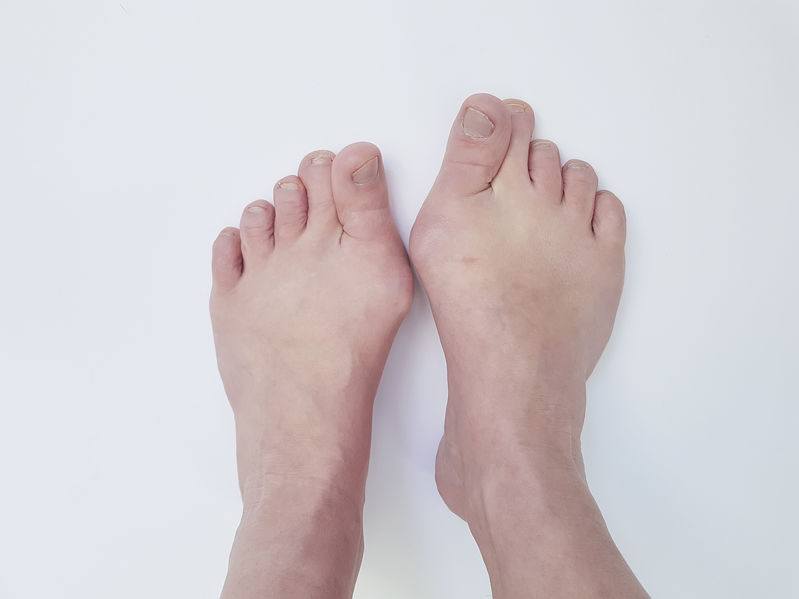Bunions

What are Bunions?
Bunions, medically known as hallux valgus, are a common foot deformity involving the joint at the base of the big toe. This condition develops when the big toe begins to lean toward the second toe, leading to a bony bump on the side of the foot.
The development of a bunion results in the misalignment of the first metatarsal bone and can cause the tip of the big toe to get pulled towards the smaller toes. This misalignment forms a bony prominence on the side of the foot, which is the bunion itself. Over time, this area can become red, tender, and painful.
What are Signs & Symptoms of Bunions?
Signs and symptoms of bunions include:
- A visible bulging bump on the outside of the base of the big toe.
- Redness, swelling, or soreness around the big toe joint.
- Persistent or intermittent pain.
- Restricted movement of the big toe if arthritis affects the toe.
- Corns or calluses often developing where the first and second toes overlap.

What are some Treatment Options for Bunions?
Bunions, characterized by a bony bump at the base of the big toe, can cause discomfort and pain, affecting daily activities. While bunions are a structural problem, several treatment options are available to alleviate symptoms and prevent worsening of the condition. These treatments range from simple lifestyle modifications to surgical interventions, depending on the severity and progression of the bunion. Here are some common treatment options:
Managing bunions effectively often involves a combination of these treatments. While non-surgical methods can help alleviate pain and slow the progression of the bunion, surgery might be considered for severe cases or when conservative treatments fail to provide relief. Consulting with a healthcare professional is essential for choosing the appropriate treatment strategy tailored to the individual’s specific condition and lifestyle needs.
At Wayne Foot & Ankle Center, Dr. Calligaro and our team are dedicated to providing expert care tailored to your specific needs. Remember, while this information is helpful for understanding general treatment options, it should not be taken as medical advice. Every injury is unique, and proper care requires a personalized approach. Contact us to schedule an appointment with Dr. Calligaro and ensure your ankle receives the best possible care.




